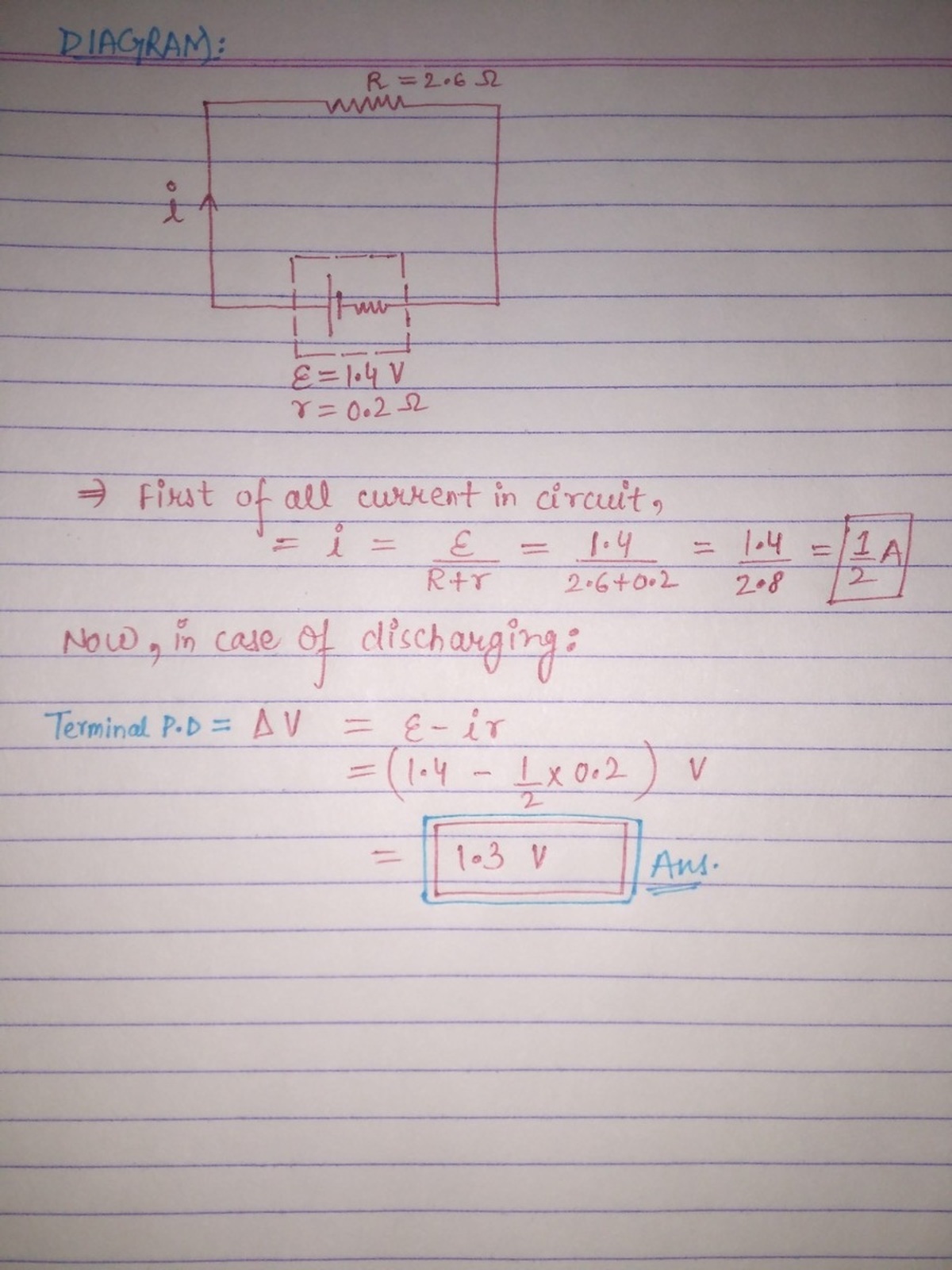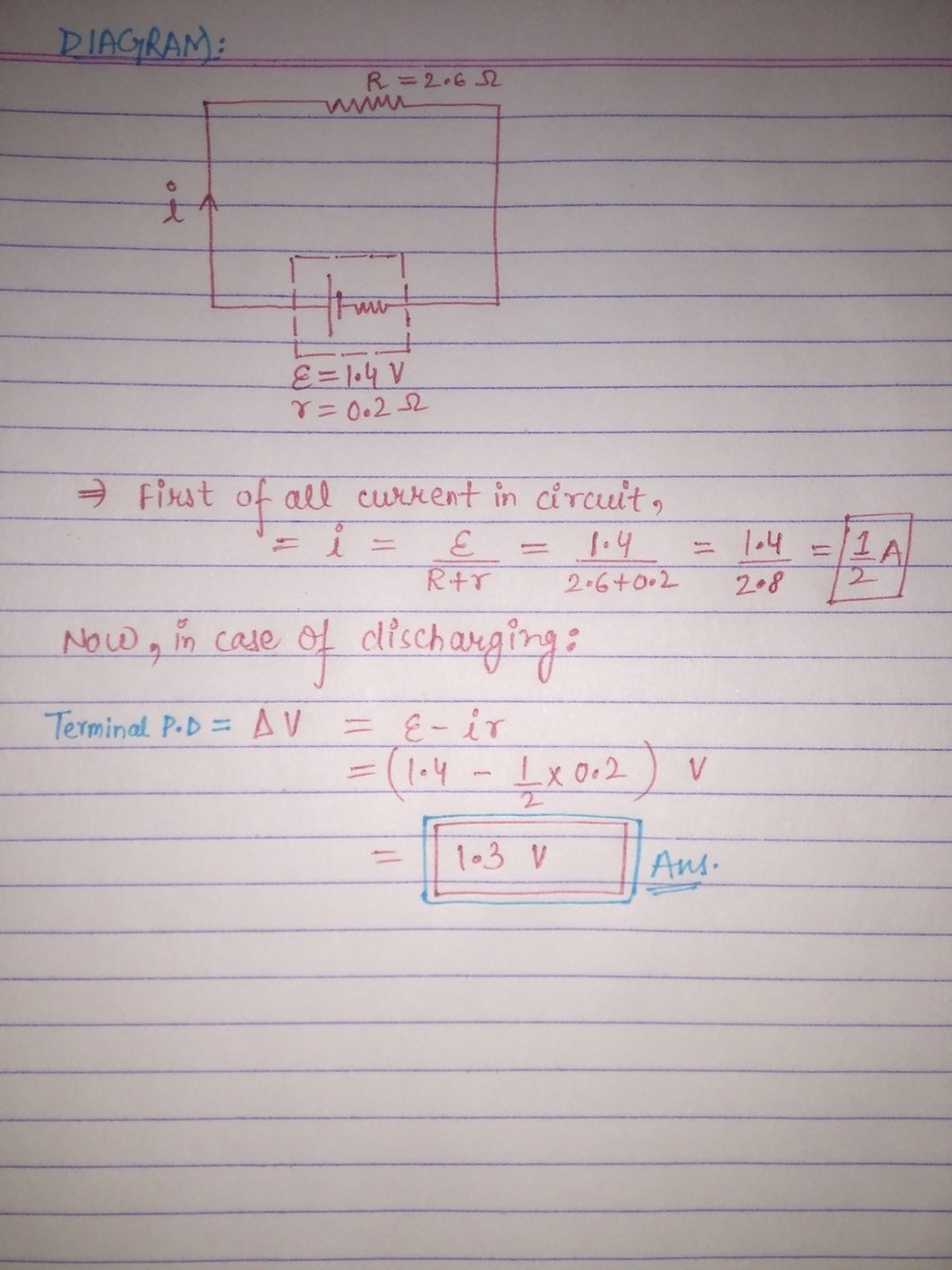Resistance
The e.m.f of a cell is and its internal resistance is What is the terminal potential difference of the cell if the terminals are connected by a wire of resistance
This section requires Javascript.
You are seeing this because something didn't load right. We suggest you, (a) try
refreshing the page, (b) enabling javascript if it is disabled on your browser and,
finally, (c)
loading the
non-javascript version of this page
. We're sorry about the hassle.

